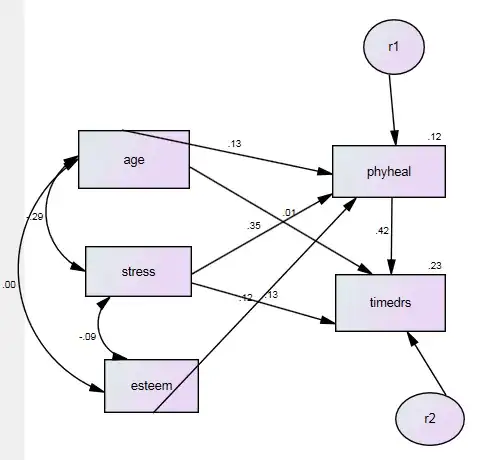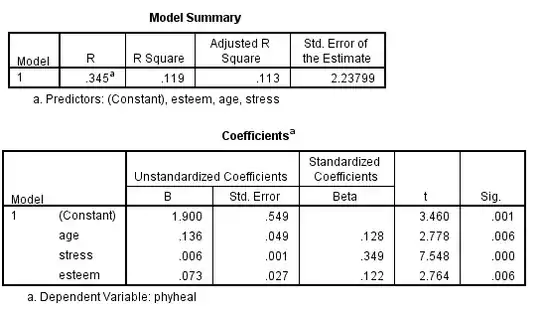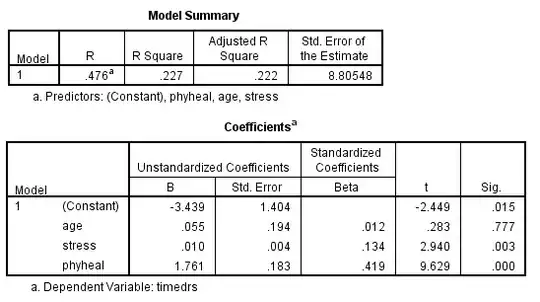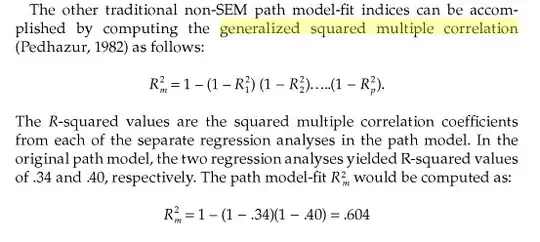I am testing this model in SPSS AMOS.

The value of .23 above the top right corner of timedrs is the squared multiple correlation for that variable.
I also ran the same analysis as two multi-step regressions. The results came out like this:


The generalized squared multiple correlation is described by Schumacker & Lomax (2004) on p159 as a "traditional non-SEM path model-fit [index]." The relevant text is as follows:

Applying the formula for a generalized squared multiple correlation, I get:
1 – (1 - .119) × ( 1 - .227) = 0.32.
This is higher than the .23 I obtained from the path analysis run in AMOS, and from the equation I can see that it can never be lower than the smallest value of R Square that goes into its calculation. I understand that I should not be surprised that the values are not the same. However, I am unsure about how to interpret the generalized squared multiple correlation, i.e. this $R^2m$ thing. What would a high/low generalized squared multiple correlation mean? Is it a good method of assessing model fit?
Schumacker, R. E., & Lomax, R. G. (2004). A beginner's guide to structural equation modeling. Psychology Press.